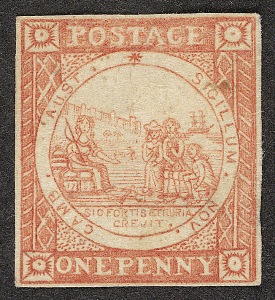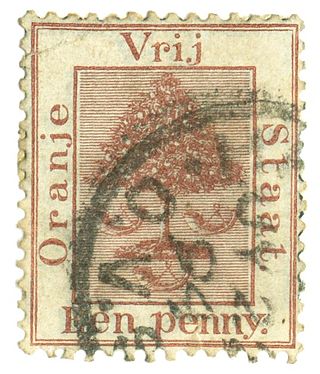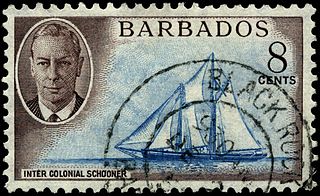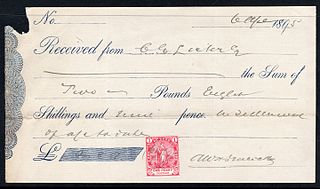
Postage stamps and postal history of Great Britain surveys postal history from the United Kingdom and the postage stamps issued by that country and its various historical territories until the present day.

This is an overview of the postage stamps and postal history of Australia.

This is a survey of the postage stamps and postal history of New South Wales, a former British colony now part of Australia.

The Orange Free State was an independent Boer republic in southern Africa during the second half of the 19th century.

The British Central Africa Protectorate existed in the area of present-day Malawi between 1891 and 1907.
This is a survey of the postage stamps and postal history of Bechuanaland Protectorate.

The Two Penny Blue or The Two Pence Blue was the world's second official postage stamp, produced in the United Kingdom of Great Britain and Ireland and issued after the Penny Black.
Each "article" in this category is a collection of entries about several stamp issuers, presented in alphabetical order. The entries are formulated on the micro model and so provide summary information about all known issuers.

The postal history of the Bahamas begins in the 18th century, with the first post office operating since 1733. The earliest known letters date from 1802. In 1804 a straight-line "BAHAMAS" handstamp came into use. The Royal Mail Line initiated a regular mail service in 1841, and from 1846 used a "Crown Paid" handstamp along with a dated postmark for New Providence.

Mauritius, a small island in the southwest Indian Ocean, is important to the world of philately for a number of reasons. Its first two postage stamps issued in 1847, called the "Post Office" stamps, are of legendary rarity and value. They were the first stamps issued in any part of the British Empire outside of Great Britain. The unique cover bearing both “Post Office” stamps has been called "la pièce de résistance de toute la philatélie" or "the greatest item in all philately". The cover was sold at auction, in Zurich, on 3 November 1993, for 5.75 million Swiss francs, the equivalent of about $4 million – the highest price ever paid for a single philatelic item up to that time. In addition, Mauritius is well known for the subsequent locally produced issues known as "primitives," also prized by collectors.

Adrian Albert Jurgens was a South African philatelist and signatory to the Roll of Distinguished Philatelists of Southern Africa in 1948 and the Roll of Distinguished Philatelists in Great Britain in 1952.

This is a survey of the postage stamps and postal history of Gibraltar.
Antigua was discovered by Christopher Columbus, in 1493, and was named after the church of Santa Maria la Antigua in Seville. It was first settled in 1632. By the Treaty of Breda in 1667 it became a British Possession.

This is a survey of the postage stamps and postal history of Barbados.
This is a survey of the postage stamps and postal history of British Bechuanaland.

This is a survey of the postage stamps and postal history of South Africa.

This is a survey of the postage stamps and postal history of South Australia, a former British colony that is now part of Australia.

This is a survey of the postage stamps and postal history of Griqualand West, a former British colony that is now part of South Africa.

Cape of Good Hope issued revenue stamps from 1864 to 1961. There were a number of different stamps for several taxes.




















